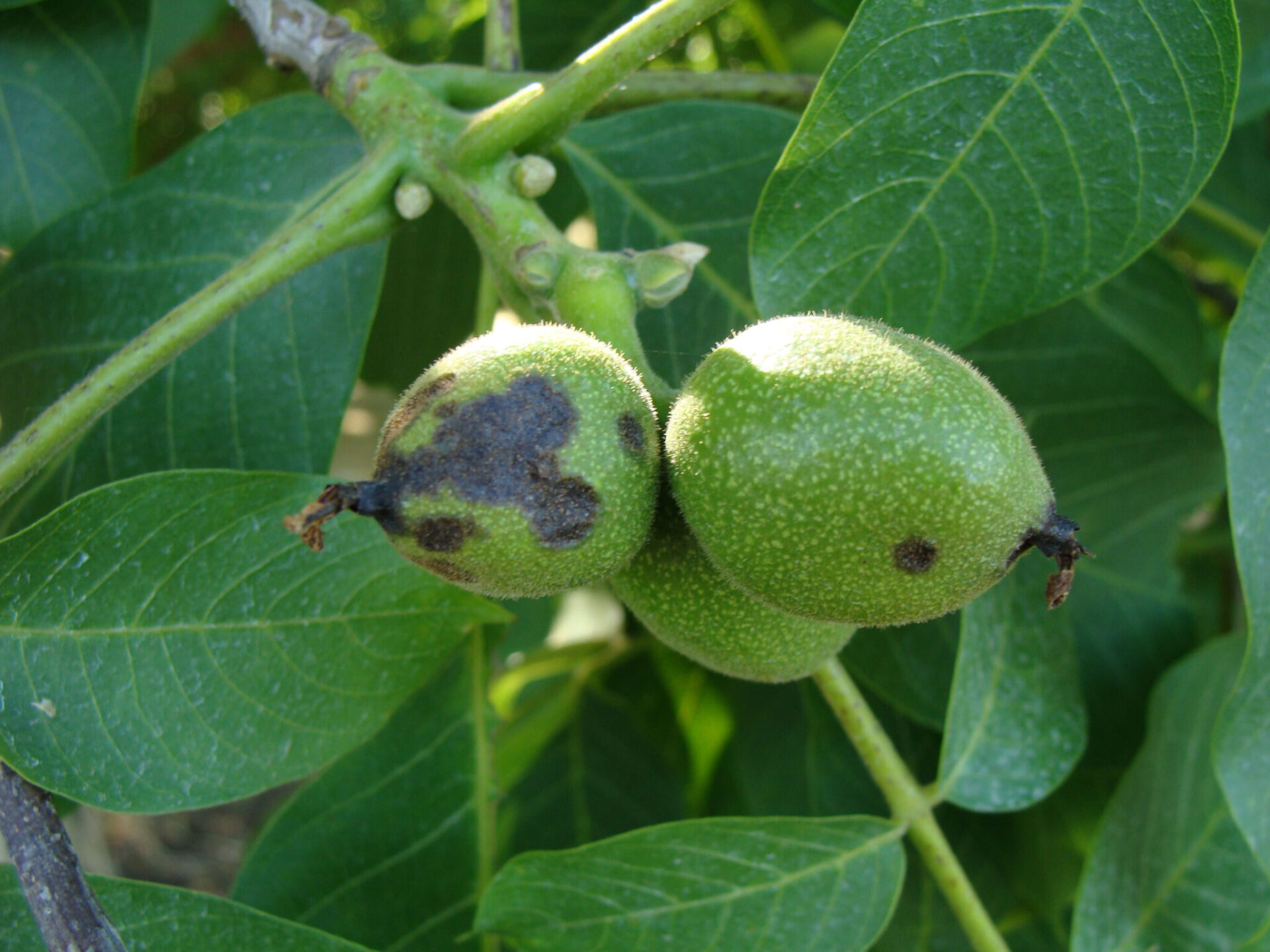
Walnut blight is a devastating disease that can overwinter in between scales of healthy buds, including male catkins and female pistillate flowers. Buds, flowers, leaves and fruit are susceptible to the disease, according to UC Riverside Plant Pathologist Jim Adaskaveg. Fruit infections can result in black irregular lesions on the hull, infections progressing into the kernel creating quality issues and direct crop loss, he said.
Current research continues to look for ways to combat and prevent walnut blight. In a 2021 UCCE Virtual Walnut Series presentation, Adaskaveg outlined research efforts that are looking to characterize and identify specific blight-causing pathogens. He and researchers characterized X. arboricola pv. juglandis (Xaj), the pathogen that causes walnut blight, among a multitude of yellow bacteria from walnut buds, where colonies were verified using specific PCR primers.
“We can show that about 67% or 70% roughly of the yellow bacteria are the Xaj,” Adaskaveg said. “So we can quantify, but it’s still difficult to do just without some molecular techniques.”
Adaskaveg and researchers conducted further fingerprinting using REP, ERIC and BOX PCR primers to show the diversity of the pathogen. Analyzing nine Xaj strains from Butte, San Joaquin, Sutter, Tehama and Yuba counties, they found that among these strains, eight different genotypes were identified. The molecular diversity of these strains, which were identified using the newly developed Xaj-specific primer pair Xaj417t, indicates that the population has the potential to adapt to different environments, Adaskaveg said.
Another focus of the blight research is developing screening methods for resistance mechanisms in walnut cultivars to ultimately reduce infection and market resistant cultivars. In one method, researchers used fruit inoculations with and without surfactants to see if they affected disease incidence in fruit.
“Usually, the surfactants are increasing the levels of disease,” Adaskaveg said.
Being that there was a relatively good relationship between natural blight incidence and disease severity on field-inoculated fruit for some cultivars, he said, fruit inoculations provided information on host susceptibility.
Another screening method looked to identify resistant varieties or selections early based on their way of supporting bacterium in the buds. Varieties with genotypes containing low bud population and low disease after inoculation and natural incidence, Adaskaveg said, are key for the Walnut Breeding Program, directed by Dr. Pat J. Brown in cooperation with Chuck Leslie at UC Davis, to move forward with blight resistance, assuming they also have good nut and horticultural characteristics.
Bud Xaj population assays in 2017-19 showed a relationship between natural bud population sizes and natural blight incidence. In 2019-20, bud population sizes four months after inoculation correlated with natural blight incidence for selected genotypes. Correlating this data helps to show that this is one strategy to look for resistance in walnut blight-resistant genotypes, Adaskaveg said.











